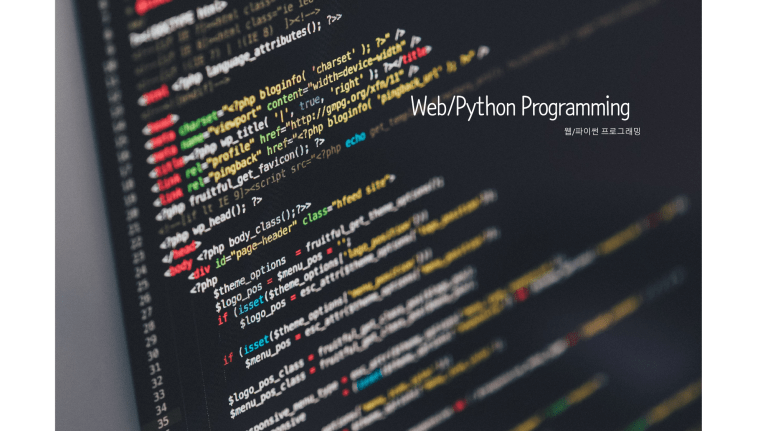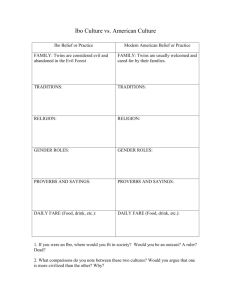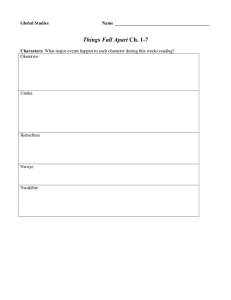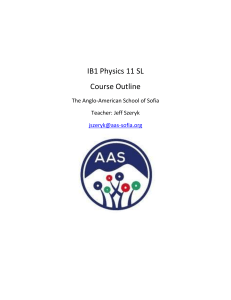
/
웹/파이썬 프로그래밍
Today
§ Python basics
§ Variables and computer memory
§ Assignment statement
§ Augmented statement
Fast paced course
§ New to programming?
§ PRACTICE PRACTICE PRACTICE!!
§ You can’t break your computer
§ Don’t be afraid to test your code
§ Worst case: reboot
Problem
Solving
PRACTICE
Knowledge of
Concepts
Programming
Skill
What is programming?
§ A program is a set of instructions
VS.
§ You can “teach” a computer new operations
Why Python?
§ It is free and well documented
§ It runs everywhere
‒ supports multiple platforms
§ It has a clean syntax
§ It is relevant
‒ many companies use it every day
§ It is well supported by tools
‒ IDLE, PyCharm, etc.
‒ Jupyter Notebook
§ www.python.org
What is a Bug?
§ May cause a program crash
§ May give incorrect results
§ Every program has bugs!
§ Kinds of errors
‒ Syntax error: Interpreter cannot understand your code and refuses to execute it
‒ Runtime error: When executing your program (at runtime), your program
suddenly terminates with an error message
‒ Semantic error: Your program runs without error messages, but does not do
what it is supposed to do
Python basics
§ ( ) Parentheses (소괄호)
§ [ ] Brackets (대괄호)
§ { } Braces (중괄호)
§ IDLE programming environment
How does a computer run a python program?
Python
Program
25 years ago
Applications
Python
Interpreter
§ Execute a .py file
§ Interact in a shell
Virtual machine
Operating System
Processor
Hard Drive
Monitor
Keyboard
Interact in a Python shell
§ Arithmetic in Python
‒ Addition, subtraction, multiplication, division
§ Types
‒ int, float, complex
Finite precision
§ Computers have a finite amount of memory
§ Operator precedence
‒ Ex) Fahrenheit to Celsius: (F - 32) * 5/9
‒ Ex) 212 ⁰F = 100 ⁰C
Variables
§ Let’s give a name to a value
‒ X, species5618, degrees_celsius
‒ 777obj(X), no-way(X), hello!(X)
§ Assignment statement
>>> degrees_celsius = 26.0
§ You can assign a new value to the existing variable
§ Note that = means “assignment”, not “equality”
Values, variables, and computer memory
§ Every location in the computer’s memory has a memory address
§ Object: a value at a memory address with a type
26.0
id1
float
id1: float
degrees_celsius
id1
26.0
§ Variable contains the memory address of the object
degrees_celsius
Values, variables, and computer memory
id1: float
degrees_celsius
id1
26.0
§ Object: a value at a memory address with a type
26.0
id1
float
§ Variable contains the memory address of the object
degrees_celsius
‒ Value 26.0 has the memory address id1.
‒ The object at the memory address id1 has type float and the value 26.0
‒ Variable degree_celsius contains the memory address id1.
Assignment statement
>>> degrees_celsius = 26.0 + 5
>>> difference = 20
>>> degrees_celsius
>>> double = 2 * difference
31.0
>>> double
40
id1: float
degrees_celsius
id1
31.0
>>> difference = 5
>>> double
40
id1: int
difference
id3
id1
20
id2: int
double
id2
40
id3: int
5
Memory visualization
§ http://pythontutor.com/visualize.html
Memory visualization
>>> number = 3
>>> number
3
>>> number = 2 * number
>>> number
6
>>> number = number * number
>>> number
36
Memory visualization
>>> number = 3
>>> number
3
>>> number = 2 * number
>>> number
6
>>> number = number * number
>>> number
36
id1: int
number
id1
3
Memory visualization
>>> number = 3
>>> number
3
id1: int
number
id1
id2
3
>>> number = 2 * number
>>> number
6
>>> number = number * number
>>> number
36
id2: int
6
Memory visualization
>>> number = 3
>>> number
3
id1: int
number
id3
id1
id2
3
>>> number = 2 * number
>>> number
6
id2: int
6
>>> number = number * number
>>> number
36
id3: int
36
Augmented assignment
>>>
>>>
50
>>>
>>>
70
score = 50
score
score = score + 20
score
>>>
>>>
50
>>>
>>>
70
score =50
score
score += 20
score
Augmented assignment
>>> d = 2
>>> d *= 3 + 4
>>> d
14
>>> number = 10
>>> number *= number
>>> number
100




